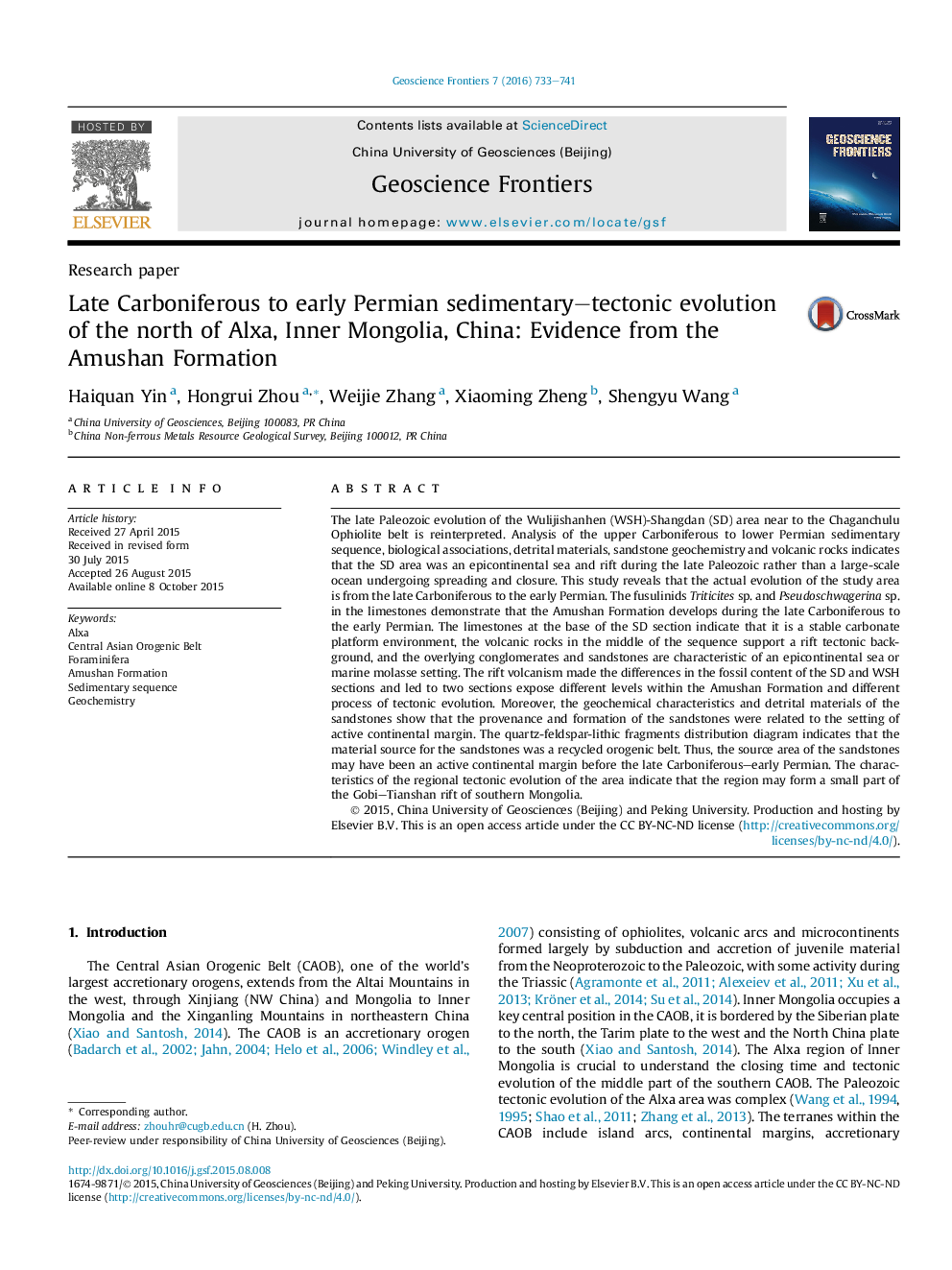| کد مقاله | کد نشریه | سال انتشار | مقاله انگلیسی | نسخه تمام متن |
|---|---|---|---|---|
| 4681473 | 1348852 | 2016 | 9 صفحه PDF | دانلود رایگان |

• Rift volcanism made the difference in the fossil content and the process of tectonic evolution in Wulijishanhen and Shangdan areas.
• Different Amushan Formation horizons exposed in Wulijishanhen and Shangdan.
• Amushan Formation sandstones formed in epicontinental sea or indicate a marine molasse deposition.
• Study area is a small part of the Gobi–Tianshan rift of southern Mongolia.
The late Paleozoic evolution of the Wulijishanhen (WSH)-Shangdan (SD) area near to the Chaganchulu Ophiolite belt is reinterpreted. Analysis of the upper Carboniferous to lower Permian sedimentary sequence, biological associations, detrital materials, sandstone geochemistry and volcanic rocks indicates that the SD area was an epicontinental sea and rift during the late Paleozoic rather than a large-scale ocean undergoing spreading and closure. This study reveals that the actual evolution of the study area is from the late Carboniferous to the early Permian. The fusulinids Triticites sp. and Pseudoschwagerina sp. in the limestones demonstrate that the Amushan Formation develops during the late Carboniferous to the early Permian. The limestones at the base of the SD section indicate that it is a stable carbonate platform environment, the volcanic rocks in the middle of the sequence support a rift tectonic background, and the overlying conglomerates and sandstones are characteristic of an epicontinental sea or marine molasse setting. The rift volcanism made the differences in the fossil content of the SD and WSH sections and led to two sections expose different levels within the Amushan Formation and different process of tectonic evolution. Moreover, the geochemical characteristics and detrital materials of the sandstones show that the provenance and formation of the sandstones were related to the setting of active continental margin. The quartz-feldspar-lithic fragments distribution diagram indicates that the material source for the sandstones was a recycled orogenic belt. Thus, the source area of the sandstones may have been an active continental margin before the late Carboniferous–early Permian. The characteristics of the regional tectonic evolution of the area indicate that the region may form a small part of the Gobi–Tianshan rift of southern Mongolia.
Figure optionsDownload as PowerPoint slide
Journal: Geoscience Frontiers - Volume 7, Issue 5, September 2016, Pages 733–741